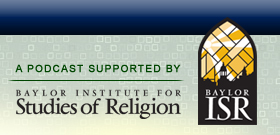

|
Bradley Murg on Russian Orthodoxy after the Soviet Union  Date: September 22nd, 2013
 Following seven decades of a repressed existence, the Russian Orthodox Church has re-emerged following the collapse of the Soviet Union to assert itself in the nation’s culture and political landscape. Bradley Murg, a Ph.D. candidate at the University of Washington and adjunct faculty of political science at Seattle Pacific University, details what has happened with the Orthodox Church since 1991 and its emerging role in politics under Vladimir Putin. Brad’s extensive travels in Russia, and indeed throughout the world, brings a special comparative insight into this topic. Following a few introductory remarks about Brad’s globetrotting, we look at how the Russian Orthodox Church (ROC) emerged from Soviet domination after 1991. Under a relatively laissez faire religious environment, the first thing the ROC hierarchy focused on was the reconstruction of church buildings. The onslaught of foreign missionaries into the country became a major concern of the ROC as well, and Patriarch Alexis II and Metropolitican (later Patriarch) Kirill looked towards the new Russian state to prevent this “spiritual poaching,” that eventually led to the passage of a law in 1997 definining historical Russian faiths (including Orthodoxy, Buddhism, Islam, and Judaism) and significantly restricting foreign confessional activity. This discussion leads Tony to inquire about the hierarchical structure of the ROC, what a “patriarch” is, how the ROC relates to the Patriarch of Constantinople (Istanbul), and how Metropolitan Kirill became Patriarch Kirill. We then move to a discussion of church-state relations and how the ROC hierarchy has attempted to achieve a level of “symphonia” harkening back to Byzantine times when religious and secular rulers partnered to support the health of the nation. Brad lists the number of benefits that the ROC has received from this newly-crafted “symphonic relation” including access to teach religion in public schools, the ability to view legislation in the Russian Duma (parliament) before it goes public, and support on a number of social issues including marriage, fertility, and gay rights. This leads our discussion in the direction of how Vladimir Putin is interacting with the ROC, including some details about Putin’s own religiosity. Putin’s use of the ROC as a means of state’s legitimation then becomes the focus of our conversation. Tony asks Brad how effective a religious legitimation strategy would work for Putin given a long history of religious suppression and the seemingly “atheistic” nature of Russian culture. We then dive into a sociological examination of the religiosity of the Russian people, and look at whether Orthodoxy is just an “ethnic marker” or whether it has some real spiritual meaning. Brad provides some interesting data on cultural shifts that may be taking place among the Russian population, including amongst the young folks in society. He then explains how Putin is attempting to expropriate the social trust average Russians place in the ROC to help bolster his own trustworthiness among the population. Our conversation moves towards an extended discussion on how the ROC has played into Russia’s including the issue over gay rights and the Olympics, but also looking at affects on policy towards Syria and relations with the World Council of Churches. We conclude with looking at how the ROC has fared with respect to cultivating religious belief within the Russian population and Brad’s broad reflections on what he has learned from examining the Russian religious environment in comparison to other places he has roamed around the world. Recorded: September 12, 2013.
RELATED LINKS Bradley Murg’s vita at the University of Washington. The Political Origins of Religious Liberty, by Anthony Gill (as mentioned shamelessly in the interview). RELATED PODCASTS Catherine Wanner on Religion in Russia. Ani Sarkissian on Religious Liberty in the Post-Soviet World. Karrie Koesel on Religion & Politics in China. Kevin Cooney on Religion and the Rule of Law in China. Doug Johnston on Missionizing Romania.
One Response to “Bradley Murg on Russian Orthodoxy after the Soviet Union”Leave a Reply to Fr. John W. Morris |
 Search The Podcast
To search the podcast, type a term and click the Search button.
  Browse Podcast Categories
Select a category below to browse the podcast:
   |















The sending of well financed Protestant missionaries to Russia after the end of Communism is one of the most un-Christian acts possible. After the Russian Orthodox Church survived savage persecution, a bunch of American Protestants flooded Russia in an effort to gain adherent by taking advantage of the weakened state of the Russian Orthodox Church. It was bad enough that the Russian Church had to undergo persecution from atheists, but unbelievable that they then had to face persecution from American Protestants. By the way a Patriarch is the senior Bishop of an independent branch of the Eastern Orthodox Church. It comes from the word Father which is the same source of the title Pope. In the ancient Church there were 5 Patriarchs, Rome, Constantinople, Alexandria, Antioch, and Jerusalem. When Rome claimed authority over the other 4 Patriarchs and they refused to abandon their historic rights, Rome broke with the other 4 Patriarchs and became the Roman Catholic Church.